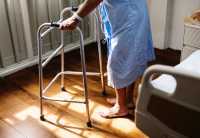Aging, Author Interviews, Exercise - Fitness, JAMA, USPSTF / 10.06.2024
USPSTF: Health Care Professionals Should Recommend Exercise for Seniors at Risk of Falls
MedicalResearch.com Interview with:
Li Li, M.D., Ph.D., M.P.H
Walter M. Seward Professor
Chair of Family Medicine
Director of population health
University of Virginia School of Medicine
Editor-in-chief of The BMJ Family Medicine
Dr. Li joined the U.S. Preventive Services Task Force in January 2021
MedicalResearch.com: What is the background for this study? What are the main findings of the underlying studies?
Response: Falls are the leading cause of injuries in older adults and can lead to serious disability and even death. To help prevent these incidents, the Task Force looked at the current evidence on ways that primary care clinicians can help prevent falls in adults aged 65 and older who live at home and are more likely to fall.
We concluded that healthcare professionals should recommend exercise interventions for adults aged 65 and older who are at increased risk for falls. This could include gait, balance, and functional training, as well as strength, resistance, and flexibility training. Clinicians can also talk with their older patients who are most likely to fall about whether additional interventions might be helpful to reduce their risk of falling.
(more…)







